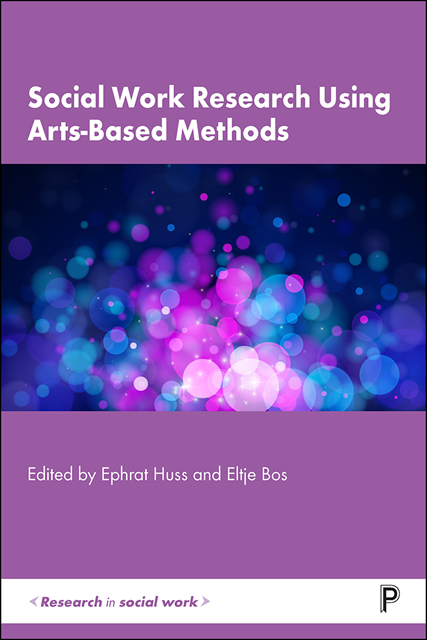Book contents
- Frontmatter
- Dedication
- Contents
- List of figures and tables
- Notes on contributors
- Introduction
- Section I Arts-based research as a method to understand and give voice to marginalised groups
- Section II Using arts-based research to listen to, and give voice to, children in social work
- Section III Arts-based research as a way for researchers and community members to understand communities
- Epilogue
- Index
5 - Using photography to research the ‘other’: the validity of photography for social work research – a visual case study from China
Published online by Cambridge University Press: 13 October 2022
- Frontmatter
- Dedication
- Contents
- List of figures and tables
- Notes on contributors
- Introduction
- Section I Arts-based research as a method to understand and give voice to marginalised groups
- Section II Using arts-based research to listen to, and give voice to, children in social work
- Section III Arts-based research as a way for researchers and community members to understand communities
- Epilogue
- Index
Summary
I’ll know it when I see it.
(colloquial expression)Introduction
This chapter will examine the role of arts-based approaches for social work research. Art is understood as the human impulse to express ideas, emotions, and experience through various forms such as painting, music, architecture, or poetry. The art seeks to reflect and convey cultural sensibilities, a spiritual zeitgeist, and artistic meaning. Art is important because the dominant discourse in social work research has privileged positivist-framed data to explain human experiences. Seeking to understand why social work education has largely ignored art as a tool of research that motivates his chapter. The art form of photography, in particular, is highlighted as a reliable and valid tool of social work research. Its advantages and disadvantages are examined based on the premise that seeing is critical to what one is trying to ameliorate. A case study based on in vivo field research in China is discussed to demonstrate the value of photographic inquiry. Specifically, China's floating population – the mass internal migration of Chinese labourers from rural to urban areas – is studied as an unprecedented socio-cultural phenomenon in need of a social work response. A visual study is appropriate to clearly see the floating population for its mitigation.
Case study: China's floating population
The phenomenon of China's floating population is unprecedented. Not well known outside of China, the term ‘floating population’ (流动人口) was first coined in the 1980s to describe the mass movement of people without permanent settlement (Solinger, 1999; Nielsen et al., 2004). Similar terms also include ‘temporary migrants’, ‘state-sponsored permanent migrants’, and ‘non-migrant urban natives’ (Fan, 2005). The unregulated migratory flow of labourers into urban centres began in the early 1980s when China's central government sought to invigorate its stagnant economy. The implementation of economic reforms unintentionally created wide-spread negative consequences in cities. Some 150– 200 million labourers relocated illegally in search of better jobs, higher wages, and improved standards of living. The floating population is perhaps the largest internal migration in human history (Cai, 1996; Chang 1996; Goodkind & West, 2002).
- Type
- Chapter
- Information
- Social Work Research Using Arts-Based Methods , pp. 55 - 67Publisher: Bristol University PressPrint publication year: 2022



